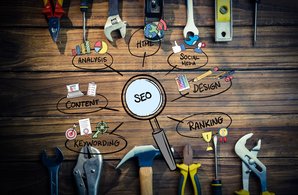Pagination Issue 2025
- Home
- Knowledge Sharing
- Pagination Issue 2025
What is pagination in SEO and why does it matter?
Imagine scrolling through a fashion eCommerce site with thousands of products — without pagination, the experience would feel endless, chaotic, and almost unusable. Pagination, in the SEO context, refers to the process of dividing large sets of content into sequential pages, typically implemented with URL parameters like ?page=2, ?page=3, and so on. It’s a structural and navigational strategy used across blogs, product listings, and forum threads.
From an SEO standpoint, pagination plays a dual role: improving user experience and optimizing crawlability . A paginated structure ensures that search engine bots can discover content beyond the first page while also enabling users to digest information in manageable portions.
When implemented correctly, pagination helps distribute link equity across pages and prevents bloated single-page designs that can delay rendering or degrade UX. In contrast, poorly executed pagination can create crawl traps or orphaned pages. As explained in Google’s documentation, crawlers prioritize linked pages — so logical pagination paths increase visibility for deep content.
What are the most common pagination issues that affect SEO?
Even well-intentioned pagination can break SEO if certain technical pitfalls arise. The most frequent issue is duplicate content . If each paginated page contains identical meta tags or thin unique content, search engines might struggle to decide which version to rank.
Another concern is loss of link equity . If the pagination chain is too long, or if "View All" pages aren’t properly canonicalized, equity might remain concentrated on page one, leaving deeper URLs under-optimized.
There’s also the risk of crawl traps , where endless or parameter-based pagination leads bots into an infinite loop. This not only wastes crawl budget but also buries important URLs. Lastly, orphaned pages — those linked only through pagination and not included in sitemaps or top nav — can get ignored entirely.
How does Google currently handle pagination?
There was a time when using rel="next" and rel="prev" attributes was the gold standard for communicating paginated relationships to Google. However, in 2019, Google officially stated that they no longer use these signals for indexing purposes. Instead, the focus shifted to user-centric design and clean linking practices.
This means SEOs now need to think less about hinting pagination logic to Googlebot and more about how users experience the journey. Well-structured pagination with clear anchor links, consistent URL patterns, and crawlable page links is the new norm.
According to Martin Splitt from Google, the priority is ensuring that all paginated pages are accessible via normal crawling and offer contextual value. Rel="canonical" remains relevant—particularly when choosing between paginated pages and "View All" versions. And the site’s internal linking must reinforce the hierarchy and flow between paginated segments.
What are the best SEO practices for paginated content in 2025?
Optimizing pagination in 2025 starts with strategic internal linking . Each paginated page should link not only forward and backward but also to important context pages—like category hubs or filters. This helps distribute equity more evenly and allows bots to navigate in multiple directions.
The use of view-all pages is encouraged when performance allows. If the full content load doesn’t hurt mobile UX or Core Web Vitals, linking to a canonical view-all version provides a single indexable asset while paginated versions can remain crawlable but de-emphasized.
Canonical tags must be assigned with precision. Either the paginated page self-canonicals, or the view-all page receives it—never both. Misuse can confuse Google about which version to rank. Additionally, use noindex carefully. It’s acceptable on thin pages but not recommended across all paginated sets, as it can deplete visibility.
Insights from Google Search Central reinforce this: think of pagination as part of the overall site architecture — not an afterthought. Structured data, breadcrumb navigation, and link consistency are critical for preserving content value.
Should you use infinite scroll or pagination for SEO?
The debate between infinite scroll and pagination continues, but the decision should be based on content type, user goals, and crawlability. Infinite scroll , while smooth on mobile, can hide content from search engines if not implemented with crawlable fallback URLs. This is especially risky in news or eCommerce sites where index coverage matters.
Pagination , on the other hand, gives clearer crawl paths and URL-defined navigation. It allows direct linking to specific content sections and easier performance tracking. From a UX standpoint, some users prefer finite pagination over endless scrolling, particularly for complex comparisons or bulk reading.
How to structure internal linking for paginated series?
Imagine a user landing on page five of a product listing and immediately bouncing because they can't find where to go next — no context, no structure, just isolation. This is what poor pagination linking looks like. Structuring internal links for paginated content isn’t about just adding "next" and "previous" buttons. It’s about maintaining a logical flow of authority and context throughout the series while supporting SEO crawlability.
One critical principle is ensuring strong horizontal linking across paginated URLs , not just linear navigation. For instance, page two of a blog archive shouldn’t only link back to page one and forward to page three — it should also link to page five or ten when appropriate, especially in extensive archives. This broadens crawl paths and helps search engines discover deeper pages faster. Internal linking maps generated through tools like Screaming Frog or Sitebulb often reveal thin interlinking between mid-series pages, which contributes to orphaning and crawl inefficiency.
Google’s John Mueller has noted that paginated content should be treated as part of a broader structure. That includes linking back to parent categories and relevant hubs, not just forward or backward in a sequence. Embedding cross-links to sibling content — such as "most popular" products or blog posts from the same date range — enriches UX and reinforces crawlable signals. When implemented properly, a paginated series becomes less of a linear scroll and more of an internally integrated archive, increasing both user engagement and SEO signal strength.
What role does canonicalization play in paginated content?
When multiple paginated URLs point to very similar content or product lists, duplicate content signals can become a real issue — not in penalties, but in diluted ranking equity. Canonical tags exist to consolidate that equity by guiding Google to the preferred version of a URL. But in paginated contexts, misuse of canonicals often causes more harm than good.
Best practice today is to allow each page in a paginated sequence to canonicalize to itself , not to the first page in the series. Google’s own documentation confirms that canonicalizing every page to page one may suppress indexation of deeper content, which is counterproductive if those deeper pages contain unique or valuable content. For example, in ecommerce, page four may include a product not found on previous pages — devaluing it through improper canonicalization hinders its visibility.
This becomes even more complex with layered filtering. If pagination interacts with faceted navigation, canonicals must be evaluated against URL parameters and crawl signals . Tools like JetOctopus and Sitebulb can identify canonical conflicts in large datasets. In test environments we’ve seen, correcting canonical structure has improved crawl depth metrics and increased organic impressions for deep-category SKUs.
How can you monitor pagination performance in SEO audits?
Monitoring pagination isn’t just about checking if "next" works. It’s about understanding how search engines crawl, interpret, and rank the entire series. That requires more than surface-level analysis — it calls for crawl simulations, log file reviews, and visual crawl path mapping .
Screaming Frog offers a crawl depth view that shows how many clicks away paginated URLs are from the homepage or category roots. If pages beyond page three fall into level five or higher, it's a red flag. In Seologist's audits, we've found that even minor tweaks in internal linking reduced crawl depth by two or more levels across entire paginated sets.
Sitebulb excels at visualizing internal link structure. Its "Orphaned Pages" and "Pagination" reports can uncover missing links between mid-series pages. Combined with Google Search Console data — specifically the "Crawl Stats" and "Discovered but not indexed" segments — it becomes clear where search engines struggle. For more advanced tracking, log file analysis pinpoints where bots drop off. If logs show Googlebot routinely skipping page six and onward, it's time to rethink linking density or investigate load time bottlenecks.
What to avoid when managing pagination in large ecommerce sites?
Ecommerce pagination introduces a different kind of complexity — scale. When thousands of SKUs are sliced across dozens of pages, small missteps get amplified. The first misstep to avoid is letting filter URLs and paginated URLs overlap unchecked . For example, a URL with both pagination and a color filter may lead to duplicate content or crawl traps. Implementing parameter handling in Google Search Console or disallowing certain combinations via robots.txt is key.
Second, avoid burying products under deeply nested categories. If pagination is added on top of already deep category logic, indexation probability drops sharply. For platforms like Magento or Shopify, ensuring that "view all" or "load more" options are available (or at least fallback options) prevents critical content from being missed by crawlers.
Finally, session IDs and tracking parameters that persist in paginated URLs can explode the crawl budget and create unnecessary duplication. We’ve seen client cases where over 50% of Googlebot requests hit non-indexable URLs purely due to poor pagination parameter control. Expert audits, such as those published by Aleyda Solis and Merkle, consistently highlight this as one of the top reasons for crawl inefficiency in ecommerce platforms.
Final checklist: SEO-proof pagination setup
Let’s wrap it up into a clear SEO pagination playbook. First, each paginated URL should canonicalize to itself and be linked both forward, backward, and horizontally. Use Screaming Frog or Sitebulb to map your pagination and track crawl depth. Ensure that filters and pagination don’t generate indexable duplicates. Monitor log files and GSC’s crawl stats to validate that Googlebot reaches all pages. Avoid session IDs and optimize category depth.
This approach has been confirmed in field tests by the Seologist audit team, where proper pagination setup led to a 27% increase in organic visibility for category pages and a 15% improvement in crawl coverage according to Search Console metrics.
Recommended resources:
Google Search Central on Pagination: https://developers.google.com/search/blog/2019/09/pagination-and-seo
Aleyda Solis – Pagination SEO Guide: https://www.aleydasolis.com/en/seo/pagination-seo-guide/
Screaming Frog – Pagination in SEO Audits: https://www.screamingfrog.co.uk/seo-best-practice-for-pagination/
Sitebulb – SEO Audit Setup for Pagination: https://sitebulb.com/resources/guides/pagination-audit-seo/






